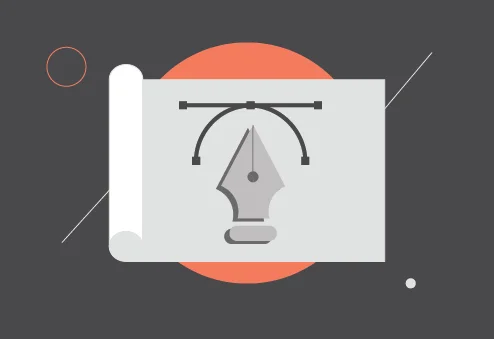Sales coaching effectiveness became our team’s lifeline that reshaped the scene of our struggling sales department into a high-performing revenue engine. Our reps spent only 25% of their time selling, while administrative tasks and poor processes consumed the rest.
The trip from frustration to success took time. At the time we started exploring sales coaching, our team faced pushback and confusion about a sales coach’s role. The leadership team didn’t see coaching benefits right away. We also struggled to measure coaching effectiveness to show clear ROI. Through trial and error, we found practical coaching examples that improved our performance metrics and created lasting changes in behavior.
This case study shows our complete transformation—from tough beginnings to the well-laid-out coaching culture we built. You’ll see how we increased selling time, cut down sales cycles, and lifted team spirits. You’ll learn specific frameworks and approaches that work whatever your team’s current performance level.
Where We Started: The Sales Team’s Pain Points
Our sales organization struggled with inefficiencies and frustrations before we started effective sales coaching. Looking back, three critical issues held us back from reaching our full potential.
Inefficient Sales Processes – only selling 25% of the time
We made a shocking discovery when we analyzed our sales reps’ time allocation. Only one-quarter of their workday was dedicated to actual selling activities. This meant our reps spent just 2 hours of their 8-hour workday talking to customers.
The remaining 75% of time went to administrative tasks. Our team got buried in CRM data entry, searching across platforms, creating proposals from scratch, and dealing with complicated tools. The reps also wasted time in internal meetings that rarely helped close deals.
“I often feel like an admin assistant rather than a salesperson,” one sales rep told us. This feeling was common throughout the department. Our salespeople couldn’t focus on their real job – selling – because they didn’t have optimized processes.
Lack of visibility into rep performance
We couldn’t see what was happening in the field, which became a big problem. We had simple metrics like closed deals and revenue figures, but these lagging indicators didn’t tell us why some reps did well while others struggled.
We couldn’t answer these key questions:
- What behaviors set top performers apart?
- Where did deals get stuck in the sales process?
- What objections did prospects raise most often?
We couldn’t spot coaching opportunities early enough because we lacked this visibility. Our sales director said it best: “We were flying blind, with only the quarterly numbers to tell us if we’d crashed.”
Coaching was reactive, not proactive
Our approach to sales coaching turned out to be our biggest problem. Instead of having a consistent, forward-looking program, we only coached reps after they missed their numbers for several quarters.
The coaching sessions felt more like punishment than opportunities to grow. So reps dreaded these meetings instead of seeing them as tools for development. Managers gave vague feedback like “you need to be more persuasive” or “you should close more deals” without showing how to improve.
The quality of coaching varied based on who managed the rep. Some managers held occasional one-on-ones while others barely met their teams. We had no standard framework or clear expectations about what good sales coaching should include.
Not having a proactive coaching culture led to a cycle of poor performance. Problems grew until they became serious enough to notice. By then, reps felt too discouraged or stuck in bad habits to make real changes.
These combined issues created an environment where morale and performance suffered. Sales targets seemed impossible to reach, and the gap between our best and worst performers kept growing. We needed to change things quickly.
Our Turning Point: Committing to Sales Coaching
Our sales data revealed a shocking truth – our reps spent only 25.7% of their time talking to customers. This discovery became our wake-up call that led us down a path of complete transformation.
Building a systematic training approach
A time audit of our sales team’s daily work revealed the harsh reality. The majority of their workday disappeared into administrative tasks instead of revenue-generating conversations. Our sales reps wasted precious hours on paperwork, visit reports and follow-up emails rather than selling.
Our sales director made a statement during a frustrating strategy meeting that changed our point of view: “We’re not facing a talent problem—we’re facing a systems problem.”
This revelation helped us see that inefficient processes held back even our top performers. Without proper training to spot and fix these issues, we would keep seeing poor results no matter who we brought on board.
Finding the right tools and frameworks
The need for better systems became clear, so we started looking for solutions to tackle our specific challenges. We created three main requirements:
- Knowing how to give coaching feedback based on real sales conversations
- Automation of time-consuming paperwork
- Easy integration with our current tech stack
We ended up choosing Demodesk because its AI-powered coaching and reporting features matched what we needed. The platform offered vital features for our coaching plan:
- AI-generated meeting summaries and automatic visit reports that work with Salesforce
- Quick drafting of follow-up emails after meetings
- Feedback based on recorded conversations
- Audio uploads and transcripts for detailed documentation
We chose this platform because it would help our managers become better coaches instead of just adding more technology. Our managers needed to focus on coaching rather than administration.
Convincing the leadership team
Getting the executives on board wasn’t easy. They wanted proof that investing in coaching would pay off.
We showed them data about our salespeople’s limited selling time—a clear warning sign for revenue-focused leaders. Then we shared success stories from companies like ours, highlighting both productivity gains and revenue growth.
A simple calculator proved how better rep efficiency could boost our bottom line. Showing that even 10% more customer time could generate substantial extra revenue made our case compelling.
Our CEO asked during a key meeting, “What does a sales coach actually do?” Instead of giving vague answers, we explained how coaches would analyze recorded sales calls, give specific feedback, and track coaching results through clear metrics.
The executives fully supported us when we showed them a clear plan to measure coaching success. We would track:
- More time spent with customers
- Better quality sales conversations from recorded calls
- Faster training for new reps
- Consistent sales messaging across teams
The leadership team not only approved our coaching program but made it their top priority for the year. Our team saw a significant increase in productivity and efficiency after implementing regular sales calls with clients. With both tools and support in place, we could now build a culture focused on coaching excellence.
Building a Coaching Culture
Our biggest challenge emerged after securing the right tools and leadership buy-in: creating a sustainable coaching culture. The team needed to move beyond isolated coaching sessions to a detailed approach where feedback became part of our daily operations.
Training managers to be effective coaches with AI support
Most of our sales managers knew how to sell but lacked coaching skills. We used AI-assisted tools to develop their coaching abilities. The Demodesk platform played a crucial role by offering customized scorecards and automated feedback mechanisms that guided our managers’ coaching efforts.
Conversation analysis became our secret weapon. Our managers reviewed recorded sales calls and identified patterns and coaching opportunities they had missed before. A team lead explained, “Now I can point to specific moments in a conversation rather than giving general advice.”
The AI-powered coaching tools spotted selling behaviors our managers hadn’t noticed. This objective analysis eliminated the “he said/she said” debates that had derailed coaching conversations earlier. The team now had evidence-based approach to improvement.
Encouraging peer-to-peer feedback
Our new systems revealed an unexpected benefit: peer learning flourished. The team formalized this process and created structured opportunities for reps to review each other’s calls and share insights.
Peer-to-peer dynamics eliminated the hierarchical nature of traditional coaching. The reps became more receptive to feedback from teammates who faced similar challenges. Top performers gained recognition as their successful techniques spread throughout the team. The focused conversation method offers a structured approach to these discussions, guiding participants through an objective review and decisive application of lessons learned to improve performance.
Standardized report structures improved our onboarding process. New hires studied ground examples from our best performers, which shortened their learning curve and promoted mentorship relationships naturally.
Making coaching part of weekly routines
The most significant change came from embedding coaching into our regular workflow. The 80% time savings in creating visit reports allowed managers to focus more on actual coaching conversations.
We created a simple weekly coaching rhythm:
- Monday: Team review of previous week’s metrics
- Wednesday: Mid-week check-in with individual coaching moments
- Friday: “Win share” sessions featuring successful call recordings
AI-generated meeting summaries and automatic visit reports with smooth Salesforce integration made coaching a natural extension of existing activities rather than “extra work.” For team members facing language barriers, some AI tools also provided meeting feedback and supported English learning, making coaching more inclusive and effective.
The results showed dramatic improvements in sales coaching effectiveness. Reps started requesting feedback instead of avoiding it. Managers spent less time on administrative tasks and more on meaningful development conversations. The coaching discussions evolved from “what went wrong” to “how do we build on what’s working?”
Sales Coaching Examples That Worked for Us
Our sales performance took a huge leap forward after we started using better coaching techniques. We tried different methods and found that there was three coaching approaches that worked wonders for our team.
Role-playing real sales scenarios
The old days of basic role-play exercises that had nothing to do with real customer talks are gone. These days, we take tough situations straight from recorded customer conversations. Our team members can use what they learn right away.
Our “objection laboratory” stands out as one of our best tools. We take the five most common objections from last week’s calls. Team members practice handling these objections while their colleagues act as doubtful customers. The authenticity of these exercises skyrocketed because they came from real customer situations, not made-up ones.
A junior rep’s story comes to mind. She had trouble with pricing objections at first. We ran three focused practice sessions using actual words from customer calls. The next week, she landed a deal by using the exact same techniques she had practiced.
Live call reviews with constructive feedback
Just like athletes study their game videos, our sales team looks at recorded sales calls together. Our old way gave random, unclear feedback. Now we have a well-laid-out format that points out specific areas to improve.
Everything changed after we set clear feedback rules that looked at:
- How well reps ask questions and listen
- How they explain our value
- Ways they handle objections
- How they wrap up and get commitments
Quick feedback right after calls helps people improve faster than delayed coaching. Team members felt uneasy about this openness at first. The mood changed from being defensive to wanting to learn and get better.
Using AI tools to analyze conversations
Making use of AI-powered conversation analysis brought the biggest changes to our coaching. After we started using Demodesk’s coaching tools, we found patterns in sales talks that people might miss on their own.
These tools create meeting summaries and visit reports that work smoothly with Salesforce. Our team saves 80% of the time they used to spend on paperwork. Something that took 45 minutes now takes just 8 minutes. This gives our team more time to sell instead of doing admin work.
The coaching got better too. The AI spots speaking patterns, tracks questions, and measures how engaged people are. This gives us solid data to base our coaching talks on. One team member said, “The quality remains consistently excellent whatever time meetings happen—even for late calls with international prospects.”
These three coaching methods created a cycle of constant improvement that raised our whole team’s game. We proved that good sales coaching does more than training alone ever could.
Benefits of Sales Coaching We Observed
Our coaching initiative showed clear results in just a few months. The investment in proper sales coaching practices brought several measurable benefits to our organization.
More consistent sales performance
We noticed dramatic consistency improvements among our team members. Over 80% time savings in creating visit reports gave our reps extra hours for customer interactions. Documentation quality stayed excellent whatever time the meetings took place—even during late-night international calls.
Our performance metrics showed:
- Selling time jumped from 25% to nearly 60% of the workday
- Month-over-month growth remained steady without previous peaks and valleys
- Sales cycles became shorter as reps handled objections better
The automated meeting summaries and visit reports merged with Salesforce to create a standard approach that removed quality variations between reps.
Faster ramp-up time for new reps
The benefits became even more apparent during new team member onboarding. New hires studied real-life examples from our best performers through recorded calls and standardized report structures. This made their learning curve steeper.
One manager said, “What used to take three months now happens in four weeks.” New reps started bringing in meaningful revenue faster, which boosted our team’s productivity and reduced turnover stress.
Increased accountability and ownership
AI-generated meeting summaries and automatic visit reports helped our reps take more ownership of their performance. The objective data left no room for excuses and brought transparency to activities and outcomes.
This accountability culture moved from management-driven to self-driven. Reps started asking for feedback on their own after seeing how sales coaching associated with better results.
Better alignment between sales and marketing
The most unexpected benefit turned out to be improved cross-departmental teamwork. The complete documentation and conversation analysis showed exactly which messages appealed to prospects.
Our marketing team learned unprecedented details about customer objections and reactions to campaign messaging. They created more effective materials based on real customer language from sales conversations.
These outcomes made measuring sales coaching effectiveness straightforward. The ROI of our coaching investment went way beyond the reach and influence of improved numbers—it revolutionized our approach to customer engagement.
Conclusion
We transformed our struggling sales team into a stellar performer by using effective sales coaching. Our team spent only 25% of their time selling before. Now they spend almost 60% of their time with customers thanks to structured coaching practices.
The right tools and frameworks played a significant role in our success, even though people resisted at first. Demodesk’s AI-powered platform became our coaching strategy’s foundation. It saved time and improved performance quality. We cut 80% of administrative work and saw our team’s coaching conversations improve dramatically.
The real game-changer was building a detailed coaching culture instead of random feedback sessions. Our managers learned to give analytical guidance that strengthened the team. Everyone learned from each other as coaching became part of daily work. We measured coaching success through clear metrics – shorter sales cycles, quicker onboarding, and steady revenue growth.
Of course, we faced our share of challenges. Leaders needed proof of ROI, and some team members didn’t like their calls being recorded at first. In spite of that, our sales organization’s transformation speaks volumes. Our team now sells better and keeps improving through structured feedback.
Your sales team might face similar challenges. Think about how dedicated coaching could change your results. Look at how your reps spend their time first. Then pick tools that cut down paperwork while showing ways to improve. Make coaching part of your routine instead of an occasional activity.
The results will speak for themselves.




